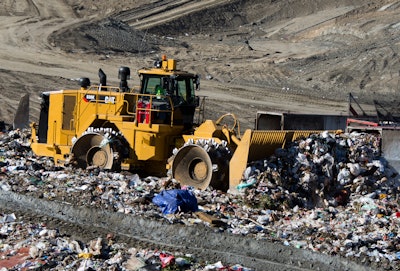
Ensuring traction and stability is a key performance criterion for designing equipment used in waste handling applications due in part to the unconventional terrain the machinery often travels over. Because of this, Caterpillar Inc. (company information, 10055175), Peoria, IL, recently introduced a wheel and tip configuration on its new 836K Landfill Compactor (learn more, 11216886).
Consisting of a spike-like tip protruding from a smooth cylinder, the wheel and tip configuration penetrates the terrain—whether it is soil or garbage—to provide traction and stability. Operators are able to keep the machine moving in the direction they steer it and perform their work without any productivity losses due to the machine not maneuvering as directed.
In addition, the wheel and tip configuration provides compacting capabilities. "Soil compacting comes from the tips themselves, whereas waste compaction comes from the wheels sinking into the trash, squeezing the air voids out," says Mark A. Welch, Landfill Application and Product Specialist at Caterpillar Inc. "The tips provide the performance of the machine to move across the trash as efficiently as possible and provide some shredding and pulverizing of materials."
Welch further explains that while the tips need to puncture garbage bags as well as shred and pulverize material in order to efficiently compact the waste, they also need to stay somewhat exposed in order for the machine to perform in an efficient matter. If too much waste material gets packed onto the wheel, eventually causing the tips to be completely covered, then the compactor will slow down due to its inability to get proper traction.
To help minimize productivity issues, Caterpillar designed the layout of the tips on the wheel in a such a manner as to prevent too much material from getting packed on the wheel between the tips and causing traction loss. Tip weight was also a key factor when developing the wheel and tip configuration. "If a tip is too heavy, then the machine is slowed down," says Welch. He explains that if a vehicle is slowed down by 0.2 mph, that can equate to a loss of up to 500 miles per year of compaction productivity on a machine operating 2,500 hours over the course of the year.
Choosing the right tip
Caterpillar developed three different types of wheel and tip configurations to better meet individual application needs. Lighter in weight than the other tip, the Paddle Tip (see image, pg. xx) is specifically designed to provide traction. Its light weight combined with an I-Beam design enables the tip to more aggressively penetrate into trash and fracture material that might stick to the tip, thus allowing the tip to clean itself. The change in contour of the I-Beam shape—larger at the ends and thinner in the middle if looking at the tip from above—works in tandem with the vibrations of the vehicle to cause clay, mud or waste material to fracture and fall off the wheel and tips.
Because the Paddle Tip is lighter in weight and has a lower mass, it penetrates waste material more easily and allows quicker movement of the machine, which in turn enables it to accumulate more distance over a given period of time. However, the tips could wear out faster than the other tips due to the additional distance traveled during their 10,000 hour expected life. The Paddle Tip is best suited for handling municipal solid waste (MSW) on a flat slope (5:1 or less) or moving straight up and down a slope.
For traction and side-hill stability when working crossways on a slope, Caterpillar developed the Plus Tip (see image, pg. xx). The tip's larger profile provides stability when working across slopes while its larger mass enables it to pulverize and shred C&D (construction and demolition) waste materials. The larger mass also means the tip will not wear out as quickly as the Paddle Tip. Welch notes that adding weight through the use of the larger mass Plus Tip can cause the compactor to be slowed down and travel less distance in a given amount of time. "Also, adding weight onto a rotating component or machine can increase wear on components such as pumps, motors, engines and the powertrain," he adds.
The third wheel tip option, the Combination Tip (see image, pg. xx), includes both Paddle and Plus Tips. Along the inner and outer edges of the wheel are the Plus Tips for extra stability, while three inner rows of Paddle Tips provide increased performance. "This wheel does not have all the weight of the Plus Tip wheel, but does provide better side-hill stability than the all Paddle Tip wheel," says Welch. "[The wheel] strategically places the larger mass (Plus Tips) in the areas that usually show faster wear and provide for the best stability."
Caterpillar works closely with customers to help them determine which is the right wheel and tip configuration for their application and productivity goals. "We want customers to understand the options and trade-offs associated with them so they can make an informed business [decision] with few surprises," says Welch.




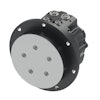
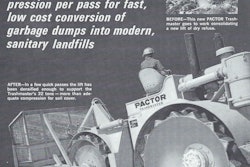
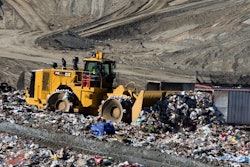
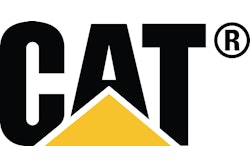









![Sa P75 I Sahr[80]](https://img.oemoffhighway.com/mindful/acbm/workspaces/default/uploads/2025/10/sa-p75-isahr80.Cn3n79HB4H.jpg?ar=16%3A9&auto=format%2Ccompress&fit=crop&h=135&q=70&w=240)

